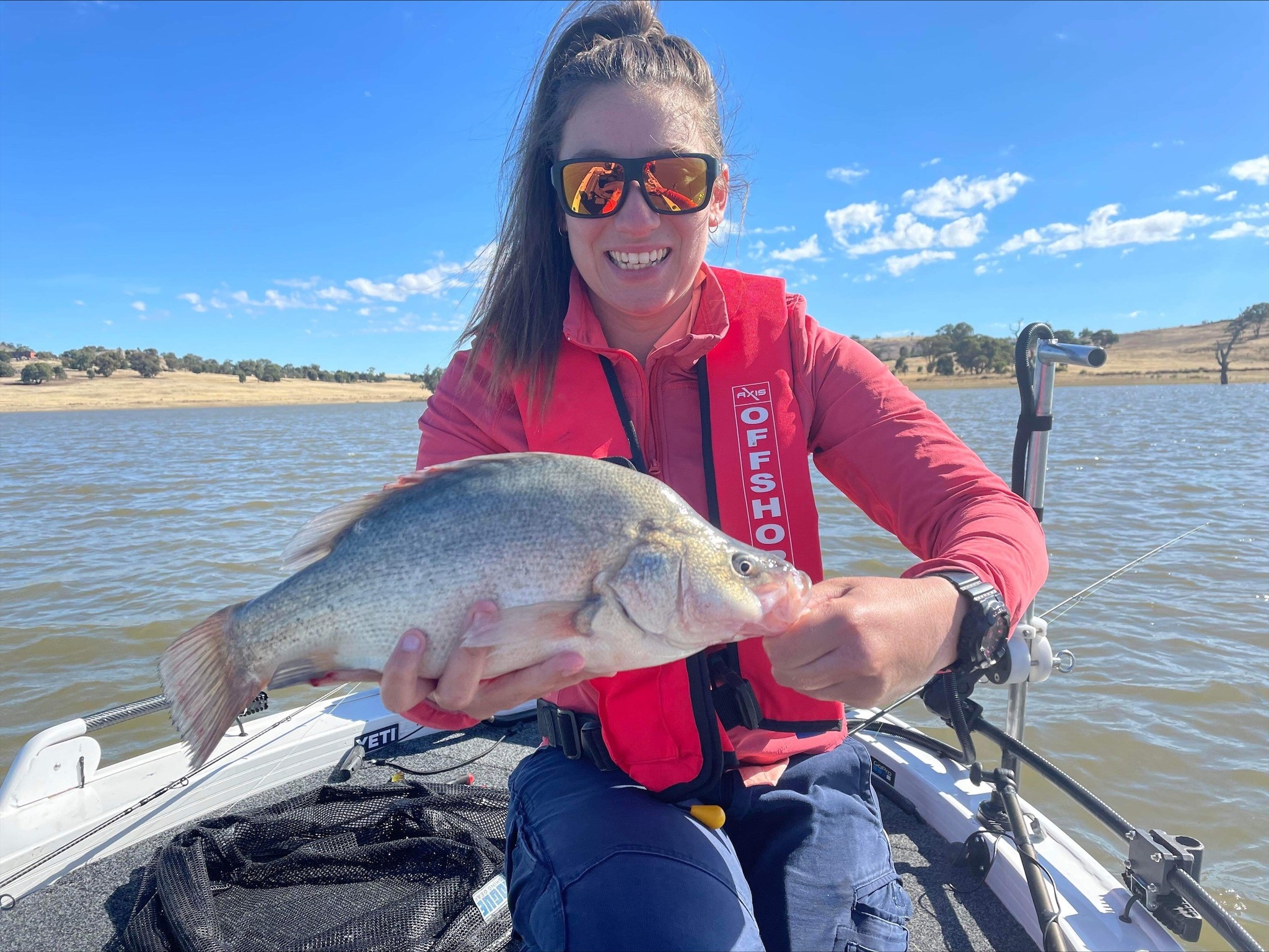
How to catch golden perch
Lake fishing
When lake fishing, it's not uncommon to stumble upon golden perch while fishing for cod and other species. However, if you want to increase your chances of success, you need to be specific with your techniques and locations and use smaller sized lures. Golden perch respond well to baits and lures, so if one method or location isn't working, it's worth trying something different. In the Central Highlands, golden perch can be found near structures, such as submerged logs, rock walls, or standing timber, from large to quite spindly. They tend to position themselves among trees on a thermocline, meaning they might be suspended at a depth of 5 meters in water that's 8m deep at a temperature they prefer. A good sounder/fish finder and knowing how to use it well can help you determine their location. Catching redfin or trout while employing any of the golden perch techniques is also common.
Trolling
Golden perch tend to school together, so the key to success is finding them in the first place. In lakes, you can troll smaller bibbed crankbaits/deep divers, lipless crankbaits, or even soft plastics or smaller spinnerbaits at depths ranging from 3 to 10 meters around the shoreline. Anything that can move slowly between the midwater and the bottom and isn't too large is worth trying, as there's a good chance a golden perch will eat it. Try using two or three different lines in the water with different lures to see what the fish respond to, as their preferences can change from day to day. Trolling is usually better conducted on banks with less timber or in areas with larger dead timber standing vertically in the water. However, there's a risk of getting hung up or snagged, so finding a balance between being in a good zone and avoiding constant snags is crucial. Once you find golden perch this way, you can turn around and go over the area again or use another technique if you prefer, but at least you've located them!
Boat-based lure casters
Casting lures for golden perch from a boat is great fun, as they will vigorously strike lures when in the mood and put up a fantastic fight on light tackle. From a boat, they can be targeted by slowly moving along the shoreline casting towards the bank with the same lures you might use when trolling. Another successful method is taking up a stationary position above fish in the trees and dropping vertically down to them. Casts can be fanned towards the bank with the lure worked or hopped back to the boat. The vertical approach requires either moving every 20 minutes or using a good sounder to find the schools in the first place. Small black soft plastic grub tails are a deadly lure in these circumstances; just move your lure very slowly from the bottom to the surface. In shallower sections of rivers and lakes, casting a diving lure either side of standing timber is also a sound approach.
Bait fishing
Bait fishing is a highly effective method for catching golden perch, with a variety of natural baits working well, such as earthworms, small yabbies, peeled yabby tails, freshwater shrimp, and even bass yabbies. When bait fishing, it is recommended to use rigs that keep the bait anchored relatively in the same position to avoid getting snagged too often. A running sinker or paternoster/dropper rig both work well, with a size #1 hook being ideal. If you don't get a bite, it's important to move often and fish the same zones as the lure casters to increase your chances of success.
Shore-based fishers
For active anglers who enjoy exploring lakes on foot or wading through the water, the cast-and-move technique can be highly effective. By firing a series of fanned-out casts in front of you and then moving to the left or right and repeating the process over a period, you can cover a good piece of shoreline and stand a great chance of intersecting active golden perch. This prospecting style of fishing will be served well by the same lures used for trolling, favouring lures that can be flung a long way into deeper water and bounced off the bottom during the retrieve. Often, strikes occur halfway back on the retrieve. To cast further and cover more water, it's recommended to use longer rods, such as a 7-7.5ft medium-action rod with a 2500-sized reel, 3kg braided line, and a 3-4kg leader of monofilament or fluorocarbon of about 6ft. Bait fishers can use the same tackle, but adding a good rod holder is essential to avoid losing your rod in the water. While golden perch can be caught throughout the day, they may be a little more active towards early morning and evening during hot weather.
